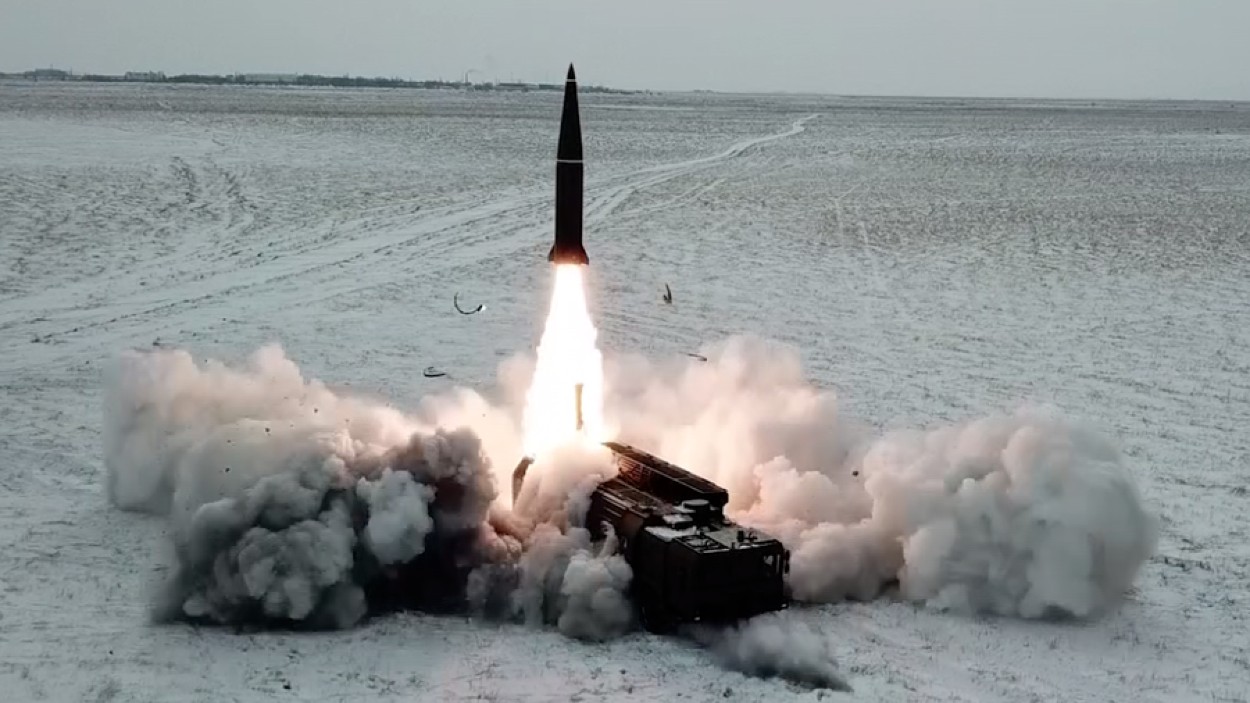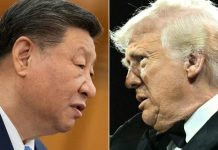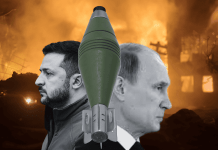Russia recently used a North Korean KN-23 Ballistic Missile in a military attack on February 15. Leading Ukrainian sources and military watchers believe that North Korea is helping Russian forces with missiles and ammunition in return for Pyongyang to access the global financial system.
Russia launched a massive military attack on Ukraine on February 15. The Ukrainian Armed Forces stated that among a host of Russian missiles that struck Ukraine in the unprecedented attack, there was also a North Korean-origin KN-23 ballistic missile.
“A total of 26 missile launches of various types were recorded, including 12 Kh-101/Kh-555/Kh-55 cruise missiles from Tu-95MS strategic bombers based at Engels Airbase, 6 Iskander-M/KN-23 ballistic missiles from Voronezh, 2 Kalibr cruise missiles from Novorossiysk, Krasnodar Krai, 4 Kh-59 air-launched guided missiles launched from near the temporarily occupied part of Zaporizhzhia Oblast and Russia’s Kursk Oblast, and 2 S-300 guided anti-aircraft missiles from Russia’s Belgorod Oblast.
The assets and personnel of the Air Force, in cooperation with units of the Defence Forces of Ukraine, destroyed 13 missiles of various types,” the service said in a statement.
The missile attack came a day after the Ukrainian military announced that it had sunk a Russian navy ship in the Black Sea using sophisticated naval drones, marking yet another loss for the Russian Black Sea Fleet (BSF). Military watchers are seeing the missile attack as Russia’s angry retaliation.
One of the six ballistic missiles that Russia launched against Ukraine on the morning of February 15 was reportedly a Korean KN-23 missile and is alleged to have caused a crater in the ground. However, EurAsian Times could not independently corroborate if the crater was caused by the KN-23 or some other missile.
Ukrainian sources have continued to assert that Russia has turned to North Korea for assistance in waging the conflict in Ukraine due to a lack of ammo manufactured domestically and restricted access to international markets.
Information appeared that the ballistic missile that fell in Kyiv region is reportedly a North Korea KN-23 one. All the trees in the 40 meter radius burned down from the impact, — Defence Express.
Imagine what would happen if it hit a residential building.
📹: BBC Ukraine,… https://t.co/JsmI6kqXrJ pic.twitter.com/4MygCP4qNK
— Anton Gerashchenko (@Gerashchenko_en) February 15, 2024
According to recent statements made by intelligence officials from US-allied nations, in a quid pro quo, Moscow might be attempting to provide Pyongyang with access to the global financial system in exchange for missiles and ammo.
The first evidence of Russia using North Korean missiles came in early January this year. At the time, Mykhailo Podolyak, a close aide to the Ukrainian President, said, “There is no longer any disguise…as part of its outright genocidal war, the Russian Federation for the first time struck at the territory of Ukraine with missiles received from…North Korea.”
The top spokesman for the National Security Council (NSC) of the White House had earlier declared that Russian forces are currently launching short-range ballistic missiles manufactured in North Korea to targets within Ukraine. At a news conference, the claim was made, citing a reliable intelligence report that Washington had acquired.
In a strongly-worded statement, John Kirby said, “Information indicates that the Democratic People’s Republic of Korea [the official name of North Korea] recently provided Russia with ballistic missile launchers and several ballistic missiles.”
Although it was long overdue, the news created a stir around the world due to intermittent reports of weaponry transactions between the two Cold War allies who have remained together despite Russia’s military assault on Ukraine. National Security Council spokesperson John Kirby said at a White House briefing that the North Korean-made missiles were fired at Ukraine on December 30 and January 2.
There is no longer any disguise… As part of its outright genocidal war, the Russian Federation for the first time struck at the territory of #Ukraine with missiles received from… North Korea. The masks are completely off. The #Moscow regime is no longer concealing its…
— Михайло Подоляк (@Podolyak_M) January 5, 2024
In November, South Korean officials stated that they believed North Korea may have sold Russia SRBMs as part of a larger arms deal that also included guns, ammunition for artillery and mortars, and anti-aircraft and anti-tank missiles. At the time, the South Korean military asserted that over 2,000 containers with armaments and military hardware were transported from Rajin, a port in northeastern North Korea, to Vladivostok in Russia.
In the latest incident, however, analysts have observed that the KN-23 bears a strong resemblance to the Russian Iskander short-range ballistic missile. While publishing the missiles’ details, the Ukrainian Ministry of Defense mentioned the missile as “1 Iskander/KN-23 ballistic missile”, underscoring that the two missiles could be analogs of one another.
KN-23 is oddly similar to Russian Iskander-M
North Korea launched the maiden test of the KN-23 series of solid-fuel SRBMs in 2019. The country’s old liquid-fuel Scud variants have been replaced by a missile that is more robust, responsive, and more accurate.
Over the previous five years, Pyongyang has launched more KN-23 test launches than any other type of ballistic missile due to its heavy investment in the missile’s development.
Despite having a North Korean design, the KN-23 shares more similarities with the Russian Iskander-M than just the appearance, which has so far been a determining feature for military watchers. Both systems operate at quasi-ballistic and depressed trajectories, exhibiting comparable flight characteristics.

Even while KN-23 is said to lack penetration aids and may not offer the same degree of evasive maneuverability as the Iskander-M, they could nevertheless make Ukrainian ballistic missile defenses more difficult to defend against.
KN-23 rockets, which were confirmed, had shown ranges of up to 800 kilometers. And, an unidentified but probably KN-23 launch in June 2023 reached about 900 kilometers.
KN-23’s 900-kilometer range would enable complete coverage of Ukraine from inside Russia’s internationally recognized boundaries since Iskander-M’s reported range is only 500 kilometers. This has been touted as a clear advantage offered by the North Korean missile.
Another advantage, according to reports, is that the KN-23’s launch weight is 3.4 tons, which is 400 kilograms lighter than the Iskander complex’s 9M723 missile. The warhead of the KN-23 weighs about 500 kilograms, which is less than the 700-800 kilograms of Iskander-M.
The missile’s design suggests it can carry nuclear and conventional payloads. Similar to its analogs across the world, the KN-23 seems to perform a “pull-up” maneuver during its terminal phase of flight, presumably to make it difficult to intercept.

Given these similarities, a few observers surmise that foreign aid was used in the development of the KN-23.8 Others, however, argue that the missile was made in the country and highlight how the KN-23 differs from the Iskander-M in that it has a smooth base and an elongated cable raceway.
Even so, like other weapons that have been intercepted and shot down by air defenses deployed by Ukraine, the KN-23 is also not infallible. However, the spokesperson of the Ukrainian Air Force, Yuriy Inhat, said the Russian military frequently uses ballistic missiles. He further stated that the country needs more countermeasures to combat the menace of these ballistic missiles.
- Contact the author at sakshi.tiwari9555 (at) gmail.com
- Follow EurAsian Times on Google News




